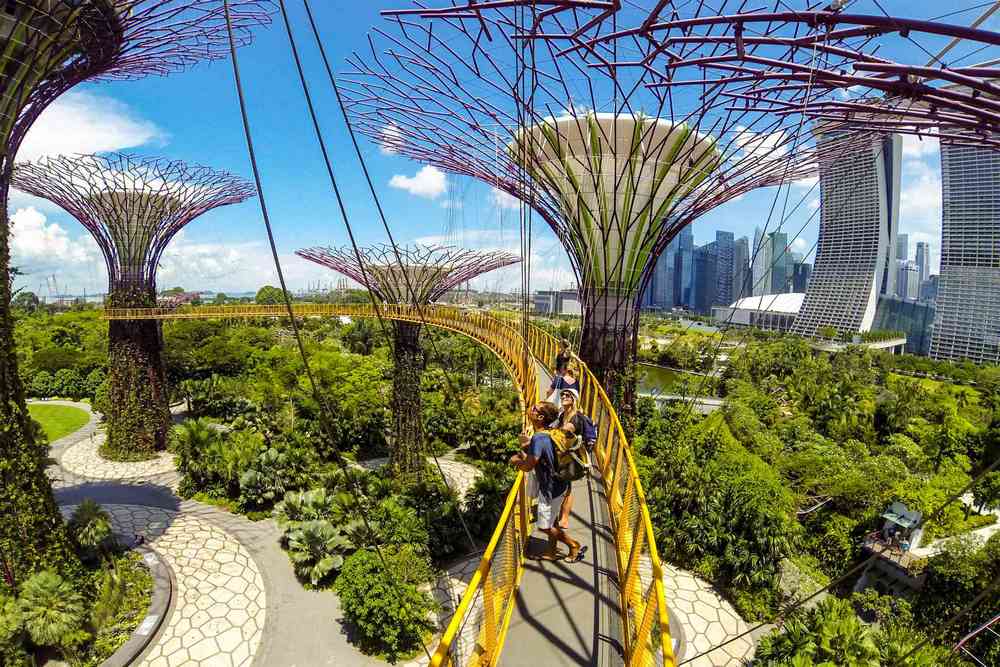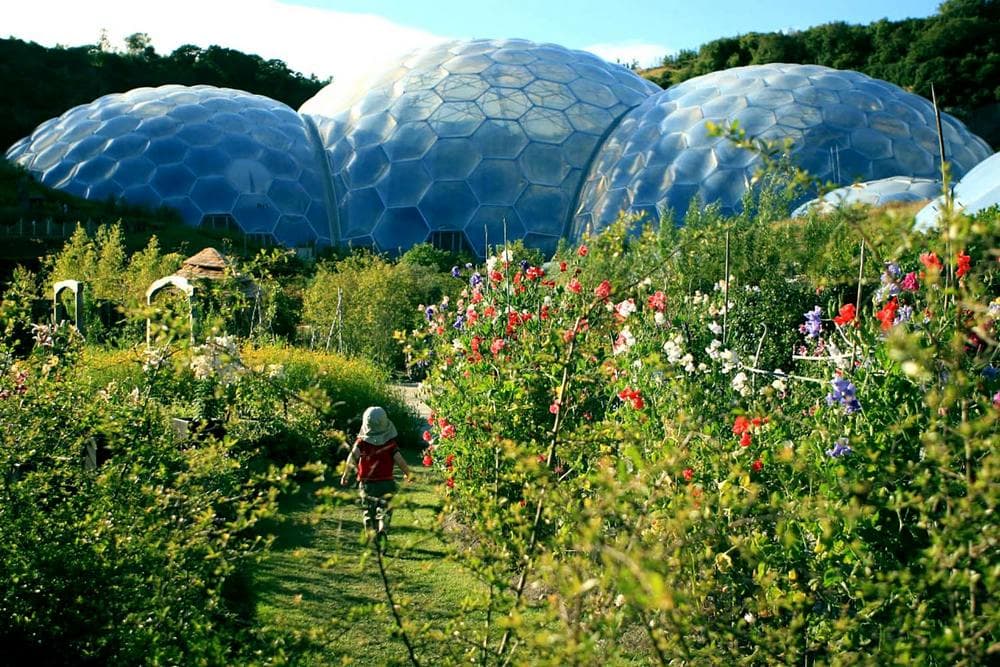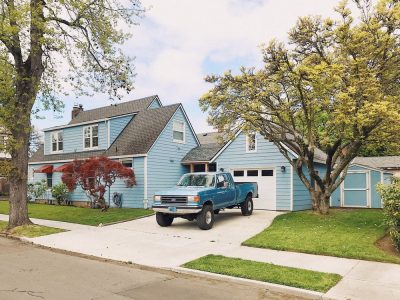
In the age of rapid urbanization and environmental decline, the allure of a thriving, sustainable garden space is more enticing than ever. As people seek ways to reconnect with nature and reduce their carbon footprint, a growing movement of eco-conscious garden enthusiasts is turning to innovative, earth-friendly solutions.
That’s why the article below focuses on the marriage between two seemingly disparate elements: the natural wonder of thriving landscapes and the creative repurposing of wood materials.
With thoughtful design and deliberate choices, these elements come together to form harmonious garden spaces that not only benefit the environment but also provide an aesthetically pleasing outdoor retreat. By merging sustainable gardening practices with upcycled wood, you can achieve a unique, eco-friendly haven that celebrates both nature’s beauty and human ingenuity.
So whether you’re new to the world of green landscaping and still have to google questions such as “Why my weed eater won’t stay running?” or you’re a seasoned gardener looking for fresh ideas, read on to discover how you can create your own garden harmony while contributing to a healthier planet!
Understanding Upcycling: The Art of Transforming Waste Into Treasure
Upcycling is a creative and environmentally conscious process that involves transforming discarded materials into something new and valuable. This approach is particularly effective when applied to wood, as it can be easily repurposed into various garden elements such as furniture, planters, and even structural components for landscape design.
Thanks to reusing wooden materials instead of buying new ones, you not only reduce your carbon footprint but also contribute to a more sustainable future.
The beauty of upcycling lies in its limitless potential for creativity and innovation. When working with reclaimed wood, you have the opportunity to experiment with different textures, shapes, colors, and finishes to create bespoke garden features that are both functional and visually striking.
Furthermore, by embracing the natural imperfections and unique characteristics of these materials, you can develop a truly one-of-a-kind design that tells a story about its origins and journey through time.
Essential Principles for Sustainable Gardening
Sustainable gardening is all about working in harmony with nature to create eco-friendly outdoor spaces that promote biodiversity, conserve resources, and minimize environmental impact. To achieve this balance, there are several key principles you should consider when designing your garden:
- Choose native plants. Selecting plants native to your region will not only require less maintenance but also provide essential habitats for local wildlife.
- Practice organic gardening. Avoid synthetic fertilizers and chemical pesticides by opting for natural alternatives like composting and introducing beneficial insects to your garden.
- Optimize water use. Implement water-saving techniques such as drip irrigation systems, rain barrels, or drought-tolerant plants to reduce your overall water consumption.
- Encourage wildlife. Create inviting habitats for birds, insects, and other creatures by providing shelter, food sources, and nesting opportunities.
- Maximize energy efficiency. Utilize solar-powered lighting options or strategically plant trees to provide shade and reduce energy consumption.
Selecting the Perfect Upcycled Wood Materials for Your Landscape
When sourcing reclaimed wood for your garden, it’s essential to consider factors such as durability, sustainability, and aesthetics. Look for materials that are resistant to decay and pests, such as cedar, redwood, or teak. Still, even if you do end up with mold or water damage issues, you can always contact damage restoration services.
Additionally, ensure that the wood has been ethically sourced and doesn’t contribute to deforestation.
You can find upcycled wood from various sources like old barns, shipping pallets, construction sites, or even your local community’s discarded furniture. Keep an open mind and be creative when sourcing materials – sometimes, the most unexpected items can become stunning garden features!

Combining Aesthetics and Functionality in Your Garden Space
A harmonious garden should be both visually appealing and functional. When designing your landscape, consider how upcycled wood elements can serve multiple purposes:
- Raised garden beds. Use upcycled wood planks to construct raised beds for growing vegetables, herbs, or flowers. They help with weed control, improve drainage, and can make gardening more ergonomic.
- Garden benches. Create a welcoming spot in your garden with a bench made from reclaimed wood. You can add a rustic charm to your garden while providing a comfortable place to sit and enjoy nature.
- Birdhouses. Use scrap wood to build birdhouses. Not only do these provide a safe place for birds to nest, but they also add a whimsical touch to your garden.
- Potting bench. If you’re an avid gardener, a potting bench can make your work much easier. Use upcycled wood to construct a durable and functional potting bench.
- Outdoor bar or kitchen. Entertain guests outdoors with a bar or kitchen made from reclaimed wood. This feature can range from a simple serving table to a full outdoor kitchen with a built-in grill and fridge.
- Fence or privacy screen. Create a fence or privacy screen using upcycled wood to add privacy to your garden or patio. You can experiment with different designs, from traditional picket fences to more contemporary styles.
- Tree swing. If you have a sturdy tree in your garden, consider making a tree swing using a piece of reclaimed wood. It’s a fun and charming addition that both kids and adults can enjoy.
- Garden sculptures. Use upcycled wood pieces to create unique garden sculptures. These can serve as focal points in your garden and showcase your creativity.
- Garden shed. A garden shed can be a big project, but using upcycled wood can make it more affordable. It could serve as storage for your tools, a potting area, or even a quiet retreat in your garden.
- Garden steps. If your garden is on a slope, consider building steps with upcycled wood. They can help prevent soil erosion while adding a design element to your landscape.
By thoughtfully integrating these elements, you can create a garden space that is not only beautiful but also practical and eco-friendly.
Nurturing Your Sustainable Landscape: Maintenance Tips and Tricks
Maintaining your sustainable garden requires ongoing care and attention. To ensure the longevity of your upcycled wood features, follow these maintenance tips:
- Regularly inspect and treat wooden elements for signs of decay, pests, or damage.
- Apply a protective sealant or finish to prolong the life of your reclaimed wood.
- Keep wooden surfaces clean and free from debris to prevent mold and mildew growth.
- Prune surrounding plants to minimize contact with wooden structures, reducing the risk of rot or damage.
By investing time in proper maintenance, you can preserve the beauty and functionality of your sustainable garden for years to come.
Inspirational Examples of Garden Harmony in Action
To see garden harmony in action, look no further than public gardens, community spaces, or even your neighbors’ yards that showcase innovative uses of upcycled wood and sustainable gardening practices. These spaces serve as living testaments to the transformative power of eco-conscious design and inspire others to embrace nature and creativity in their own landscapes.
The Eden Project, Cornwall, UK
This extraordinary garden is a striking example of sustainable design and harmony with nature. The site, which was a disused clay mine, has been transformed into a collection of biomes housing plants from all around the world. They have also used reclaimed timber for various buildings within the site, demonstrating how upcycling can create beautiful, functional structures.
Singapore’s Gardens by the Bay
This marvel of eco-design uses sustainably sourced wood and innovative architecture to create a thriving, harmonious space. The garden’s Supertree structures are a testament to the fusion of technology and nature. The vertical gardens collect rainwater, provide shade, and work as an environmental engine for the conservatories.
Community Gardens in New York City, USA
These urban oases utilize upcycled materials, including wood, in creative ways. They have been designed with the community in mind, providing a peaceful and productive green space in the heart of the city.
In Conclusion
Through the seamless integration of upcycled wood and sustainable gardening practices, we can create lush, eco-friendly landscapes that are as beautiful as they are beneficial to the environment. The transformation of discarded materials into functional garden features adds a unique charm, while sustainable methods support biodiversity and minimize environmental impact.
Whether it’s a birdhouse made of reclaimed wood, a thriving vegetable bed, or a quiet bench overlooking blooming flowers, these spaces embody garden harmony in their truest form. As we care for our sustainable gardens, we’re not only nurturing our but also promoting a healthier planet, affirming that with thoughtfulness and creativity, we can indeed unite nature and sustainability for harmonious landscapes.









